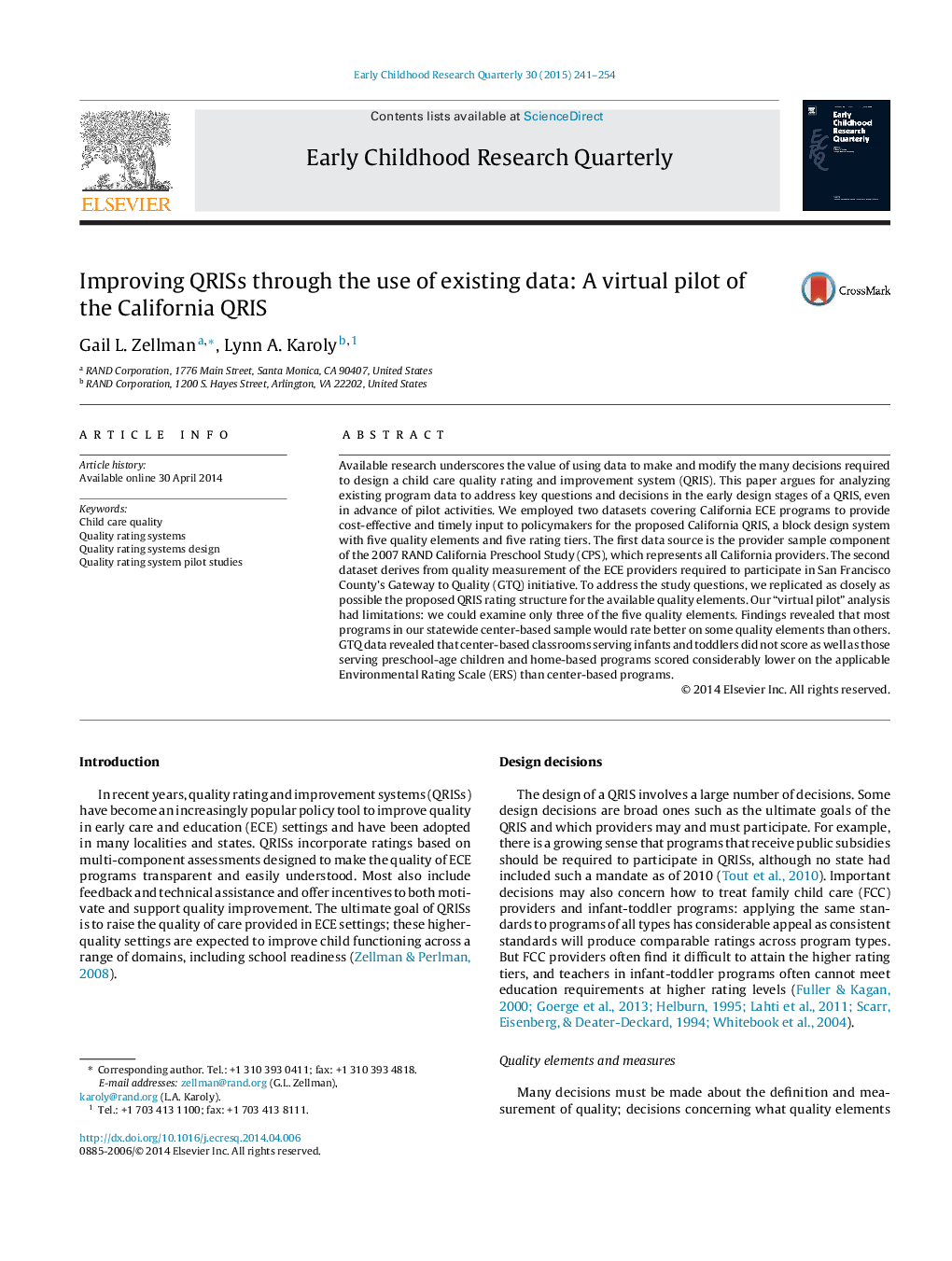| کد مقاله | کد نشریه | سال انتشار | مقاله انگلیسی | نسخه تمام متن |
|---|---|---|---|---|
| 353745 | 618942 | 2015 | 14 صفحه PDF | دانلود رایگان |
• Most programs would rate better on some QRIS quality elements than on others.
• Correlations among rating elements were not high.
• Preschool classrooms scored higher than infant-toddler ones on quality elements.
• Home-based programs scored much lower on the applicable ERS than center-based ones.
Available research underscores the value of using data to make and modify the many decisions required to design a child care quality rating and improvement system (QRIS). This paper argues for analyzing existing program data to address key questions and decisions in the early design stages of a QRIS, even in advance of pilot activities. We employed two datasets covering California ECE programs to provide cost-effective and timely input to policymakers for the proposed California QRIS, a block design system with five quality elements and five rating tiers. The first data source is the provider sample component of the 2007 RAND California Preschool Study (CPS), which represents all California providers. The second dataset derives from quality measurement of the ECE providers required to participate in San Francisco County's Gateway to Quality (GTQ) initiative. To address the study questions, we replicated as closely as possible the proposed QRIS rating structure for the available quality elements. Our “virtual pilot” analysis had limitations: we could examine only three of the five quality elements. Findings revealed that most programs in our statewide center-based sample would rate better on some quality elements than others. GTQ data revealed that center-based classrooms serving infants and toddlers did not score as well as those serving preschool-age children and home-based programs scored considerably lower on the applicable Environmental Rating Scale (ERS) than center-based programs.
Journal: Early Childhood Research Quarterly - Volume 30, Part B, 1st Quarter 2015, Pages 241–254
